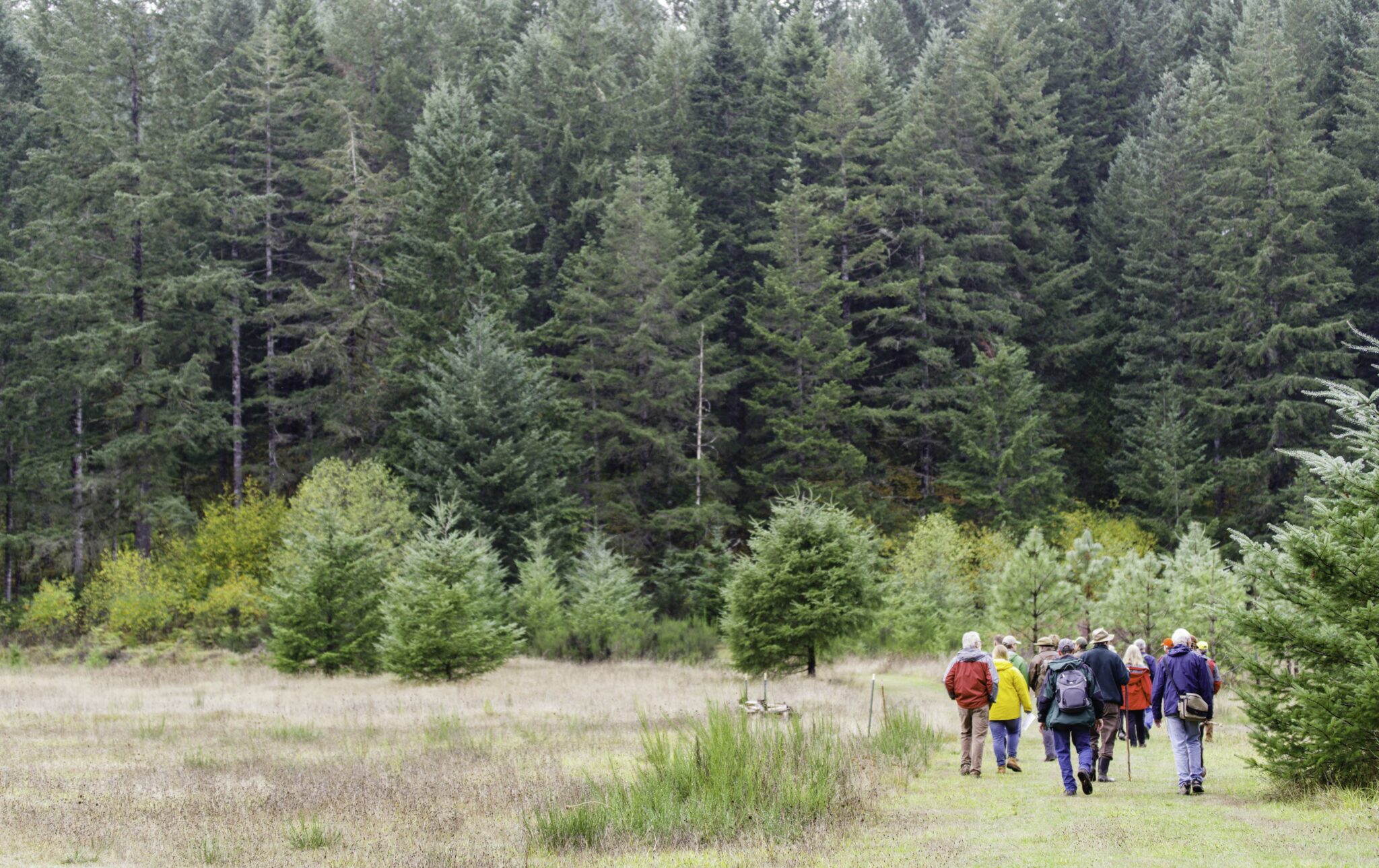Carbon Market Opportunities in the Pacific Northwest

Article by Midori Sylwester. Midori completed her University of Washington Program on the Environment Capstone Project with Northwest Natural Resource Group in Winter/Spring 2024.
Small private non-industrial landowners own roughly forty percent of forestland in Washington State (Chowdhury and Brown, 2023) and, on average, prioritize objectives such as wildlife habitat, water quality, and recreation over timber harvest and income generation (Rabotyagov et al., 2021). This tends to increase the carbon storage in their forests.
Carbon markets have emerged as an opportunity to support landowners in maintaining these carbon sinks. Ensuring carbon programs are accessible to them would provide financial support while increasing the carbon sequestered. Yet, the carbon programs available to these small landowners are limited, especially in this region of the United States,
My project this quarter (Winter 2024) was to identify and share programs accessible to landowners with at least 40 acres of forest. Reaching small forest owners with carbon markets is challenging for a few reasons. Carbon markets are incredibly young and projects on small holdings are expensive to develop in comparison to the market value of the carbon that can be sold. Nevertheless, a handful of programs stood out throughout my research and are summarized in the table below.
• Forest Carbon Works, a program focused on improved forest management, has a forty-acre minimum with a 60-year minimum contract. In a conversation, one of their representatives said that Forest Carbon Works supports and encourages ecological management of forests, emphasizing natural forestry practices. The target audience is non-industrial forest landowners focused on environmental sustainability, passing land on to families, and limited timber harvesting. Landowners participating in the Forest Carbon Works program incur no costs throughout development, crediting, or monitoring periods, as those costs are accounted for in the revenue split between FCW and the landowner. The landowner has the option to choose between a “Standard Payment Model” and “Revenue Share Model”, which differs in the amount received and the risk that the landowner takes on.
• LandYield, a harvest deferral carbon program, launched in 2023 and plans on extending its services to the Pacific Northwest late this year. LandYield requires a 40-acre minimum and 40-year minimum contract, promising zero upfront costs. LandYield says they will recover their development costs by taking a share of the revenue from sale of carbon.
• A third program I had the opportunity to sit down with was Anew Climate – formerly Bluesource. Their minimum acreage requirement is much higher and thus is likely less accessible to most small landowners. Regardless, Anew is long-established in carbon markets and brings extensive experience to the table for those with enough forest to qualify. Anew chose not to share their pricing and methodology.
In my conversations with program representatives and developers, a few themes continued to arise that are important to mention. One is the uncertainty behind how much revenue a landowner will get from participation. Carbon markets are young, and we don’t know what future carbon prices will be, making it increasingly difficult to estimate revenue. Estimations of revenue also include characteristics that fluctuate by landowner and project: total acreage, growth rates, location, and current management practices, among others. The national annual crediting average per acre is roughly two tons. Pacific Northwest forests have the potential to accrue up to six tons per acre each year, because the land in this region is so productive. The price of carbon currently sits at roughly $15-$18/ton in the California compliance market, whereas the voluntary market can present prices between $20-$30/ton for Pacific Northwest carbon projects.
Common concerns around carbon markets include the transparency of programs – how exactly do they quantify your carbon? How do they determine the price and how much revenue you receive? Carbon programs are required to follow a specific carbon accounting methodology, determined by the registry they work with. For programs to provide their services, their methodology must be approved by carbon registries prior to conducting development. When asked about their transparency to clients, all programs I spoke to pointed me to their registries and noted that, while convoluted and difficult to understand, methodology is public information. The overall revenue received by the landowner is determined by the market price of carbon and the revenue sharing determined by programs, on top of the program-specific costs that might be deducted from landowners’ final income to compensate for project development.
Finally, a recurring analogy I noticed throughout my research was the idea of carbon opportunities as a tool in the toolbox. Carbon projects are only part of the solution and may not work in every context. They can be a great solution for landowners who meet requirements by providing financial incentives while sequestering carbon. For landowners especially interested in carbon opportunities as a climate mitigation strategy, these projects can encourage innovation and bridge the gap between where we are now and the future of forests.
Bibliography
Roy Chowdhury, P. K., & Brown, D. G. (2023). Modeling the Effects of Carbon Payments and Forest Owner Cooperatives on Carbon Storage and Revenue in Pacific Northwest Forestlands. Land Use Policy, 131, 106725. https://doi.org/10.1016/j.landusepol.2023.106725
Sergey Rabotyagov, Luke Rogers, et al (2021). Washington’s Small Forest Landowners in 2020: Status, trends and recommendations after 20 years of Forests & Fish. University of Washington School of Environmental and Forest Sciences.
Additional Resources
Introduction to Forest Carbon, Offsets and Markets | OSU Extension Service

Leave a Reply